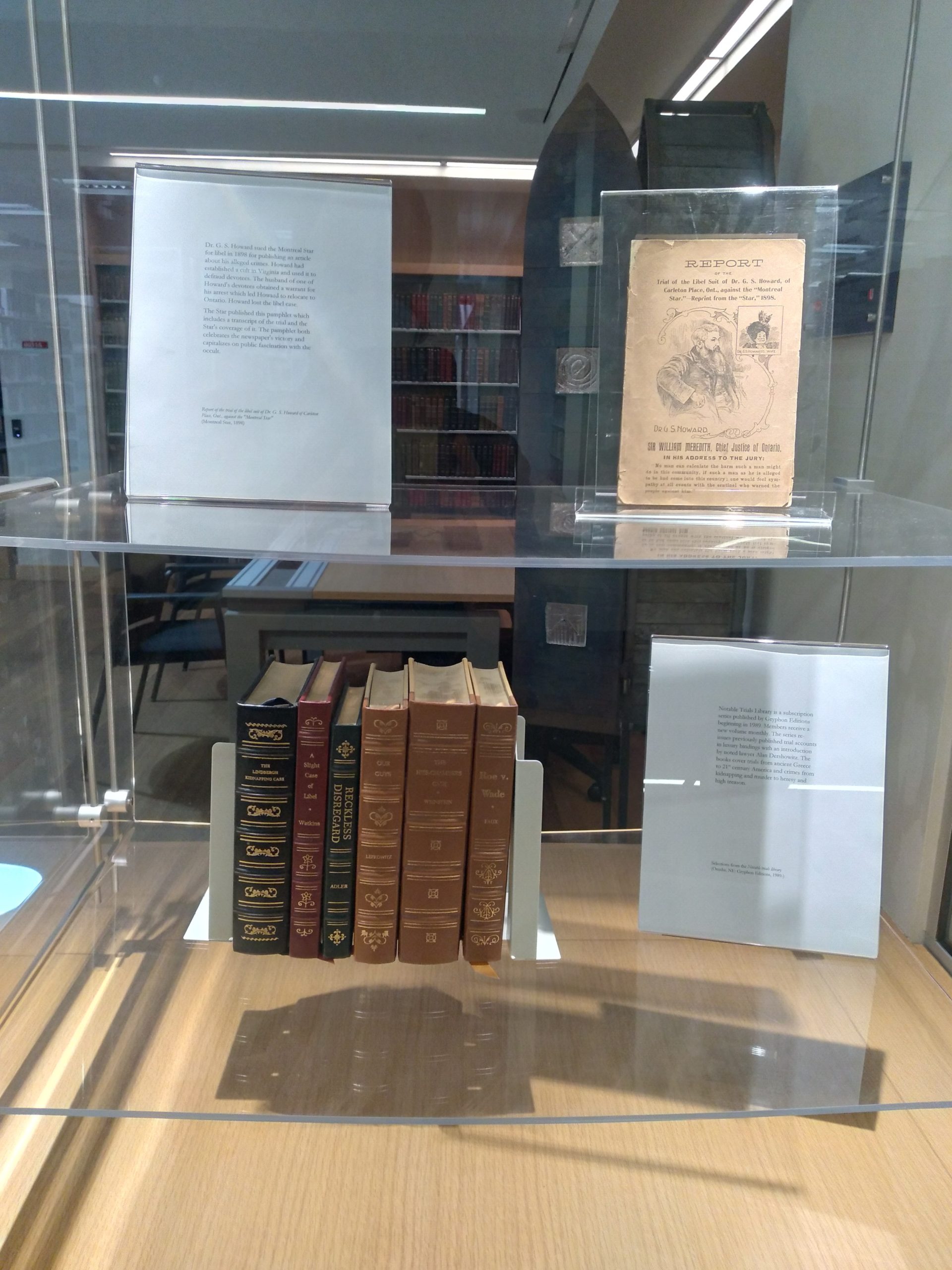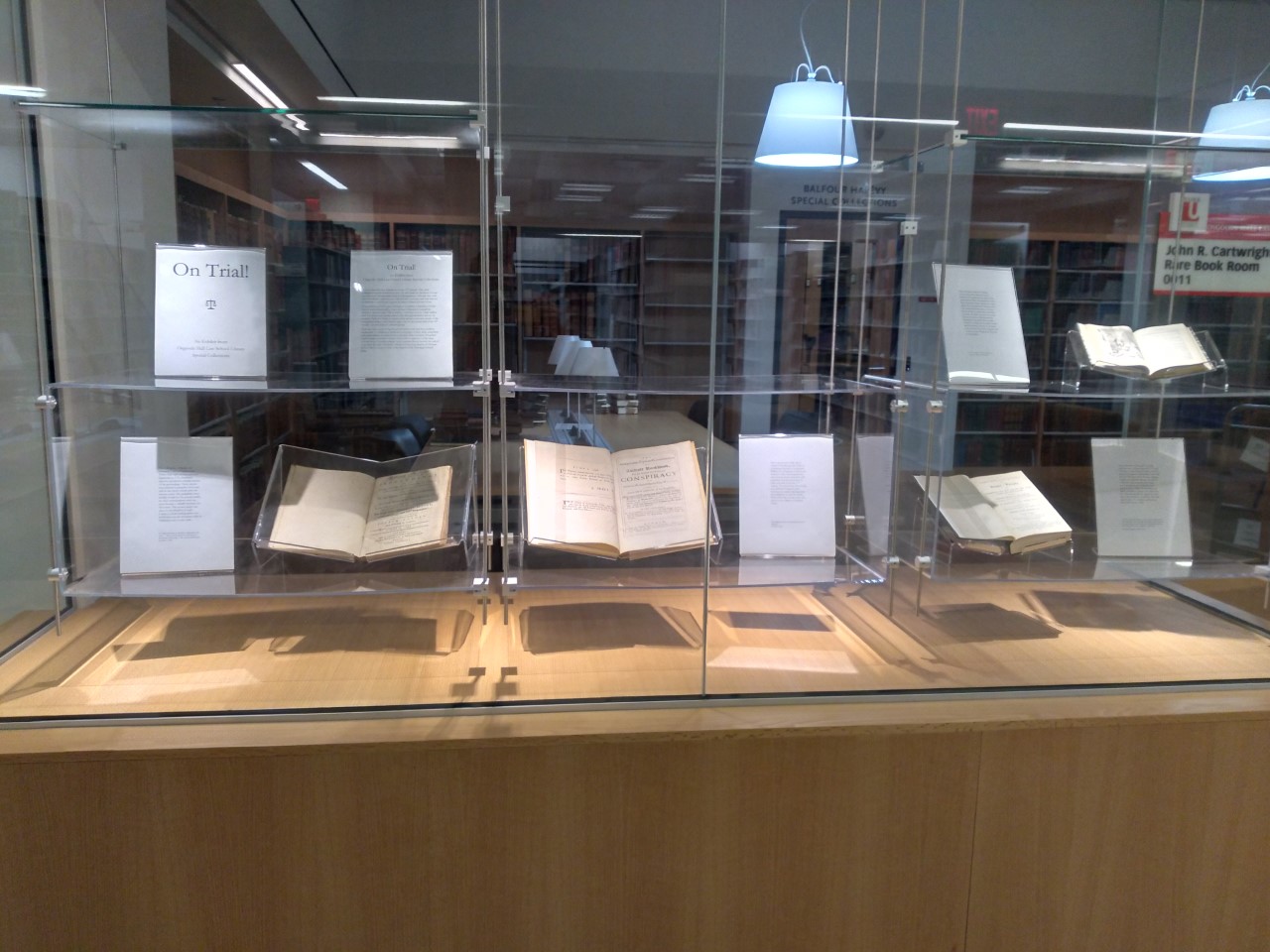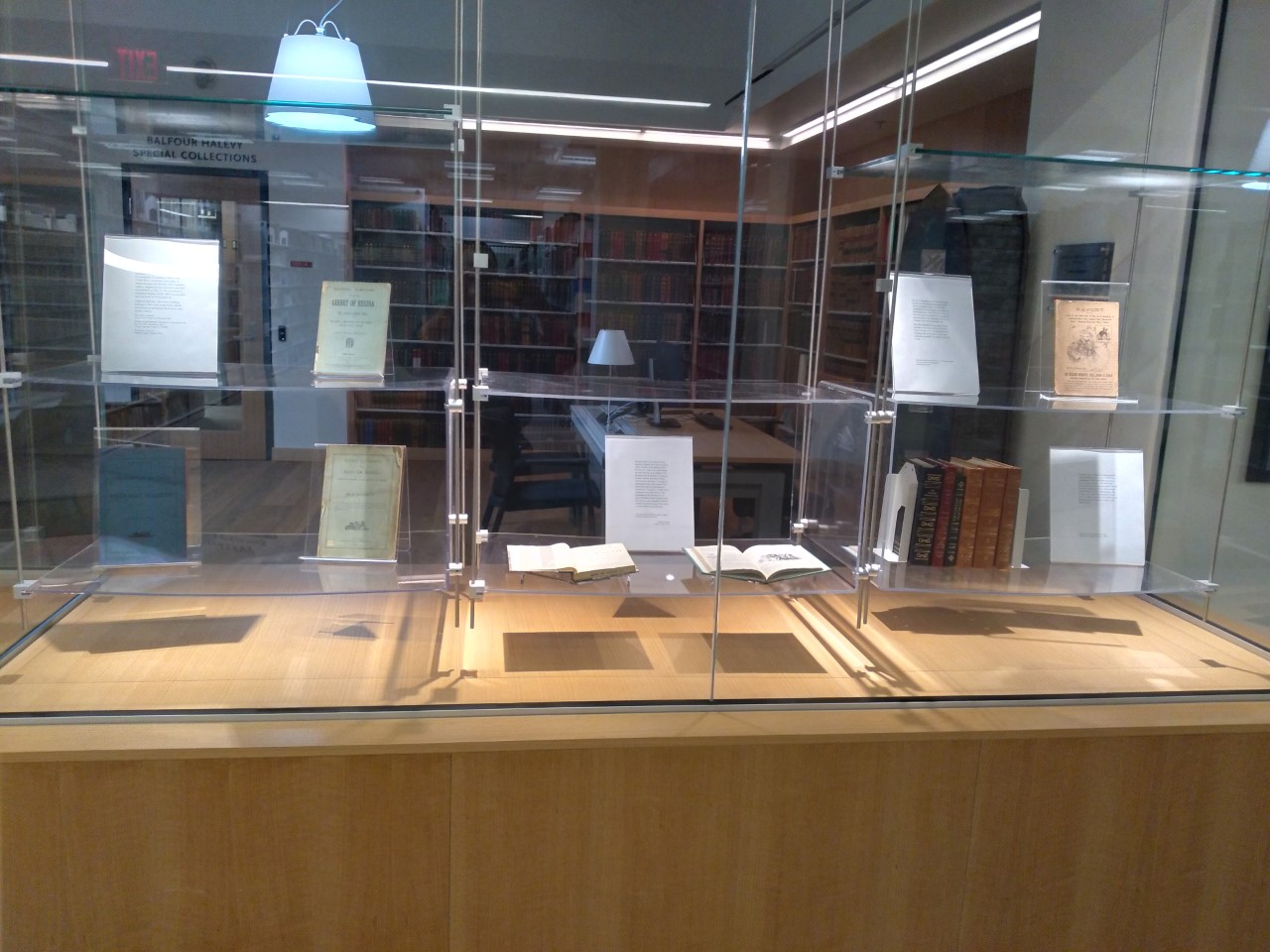A new rare book room exhibit, curated by Beck Shaefer, Library Cataloguing Assistant, is now on display in the library. On Trial! traces the way that trial accounts have been published and read since the end of the 17th century. Read the introduction and see images from the exhibit below:
Trial accounts became popular in the late 17th century. They were published and sold immediately after the trial based on the notes of court reporters and verbatim transcripts by stenographers. Although they were sold individually, many lawyers collected these accounts and sent them to bookbinders to be bound together in larger volumes for ease of use.
Soon publishers took it upon themselves to publish collections of court reports and trial transcripts. Some of these collections focussed on particular types of trials. The Complete Collection of State Trials collects trials for treason and similar crimes from throughout British history. In contrast, Trials for Adultery names names and gives prurient details of the extramarital affairs of the British upper class in the second half of the 18th century - an early form of celebrity gossip.
Trials are often a part of significant historical events and have political implications. In addition to published transcripts of these trials, pamphlets and parliamentary documents about the trial often circulated. Pamphlets might include an insider's version of the trial or opinions on the larger political issues. A notable example from Canadian history include the trial of Louis Riel.




